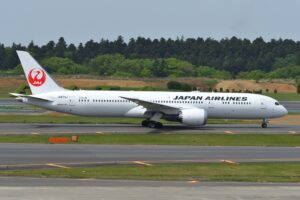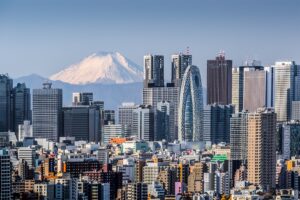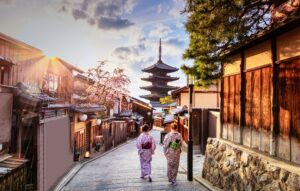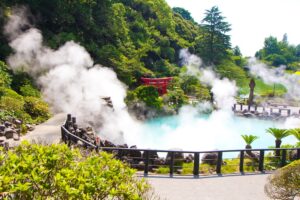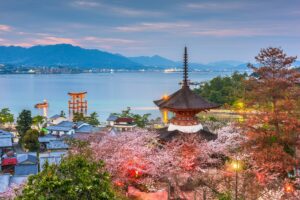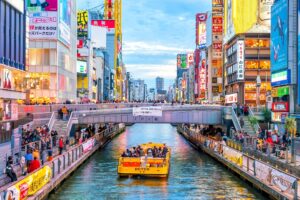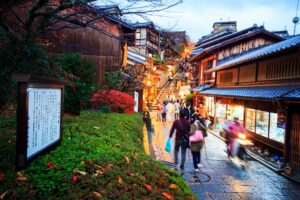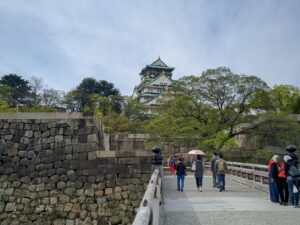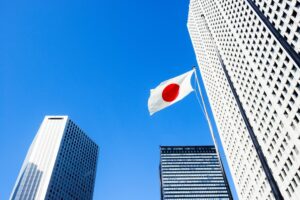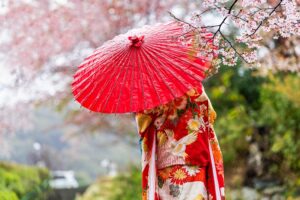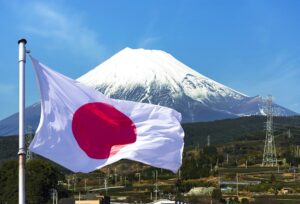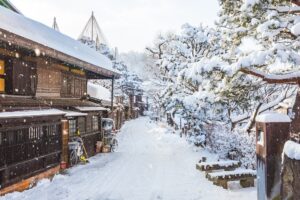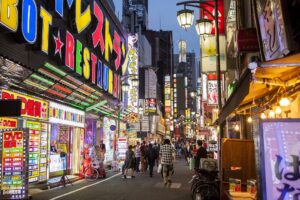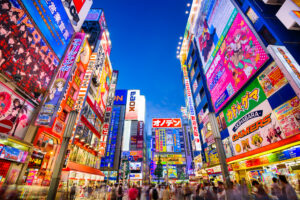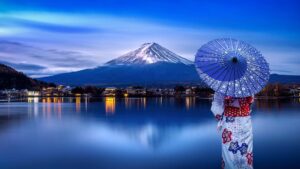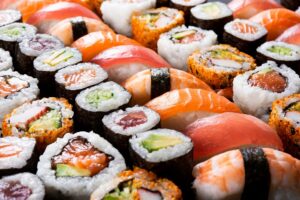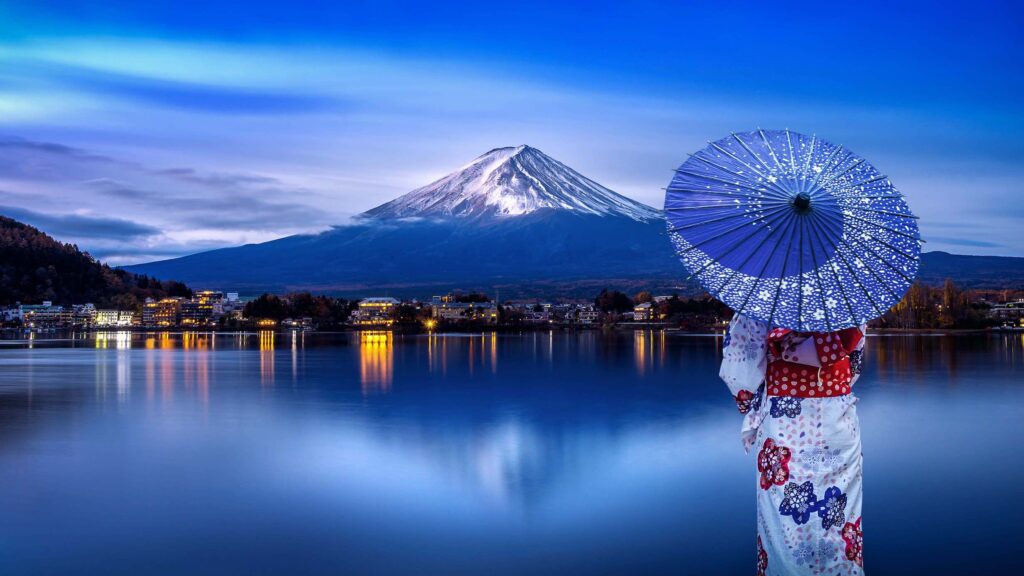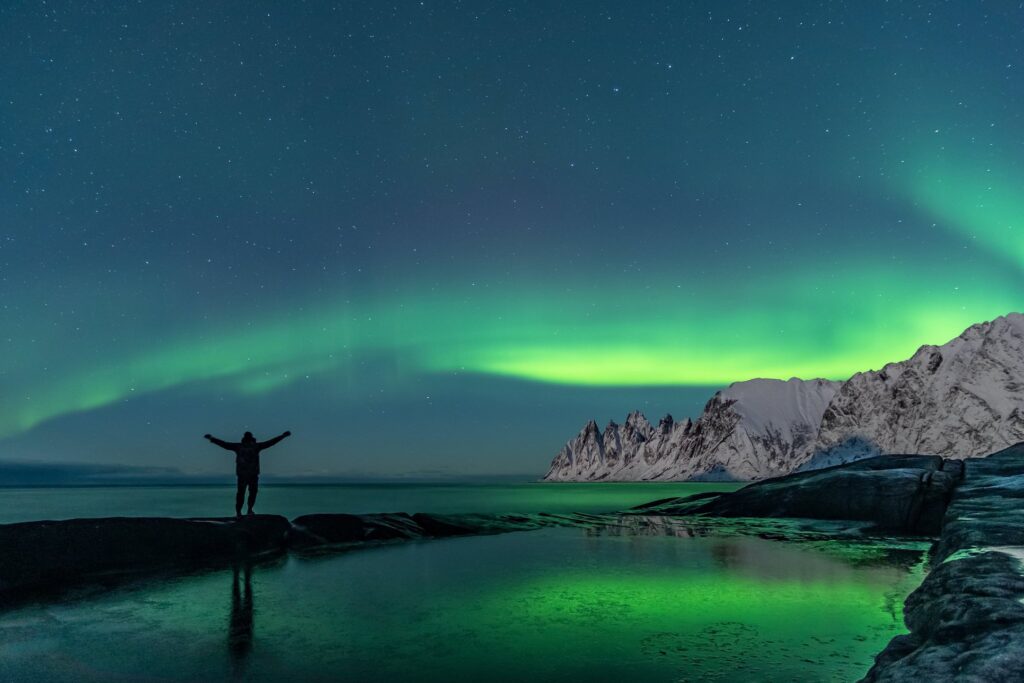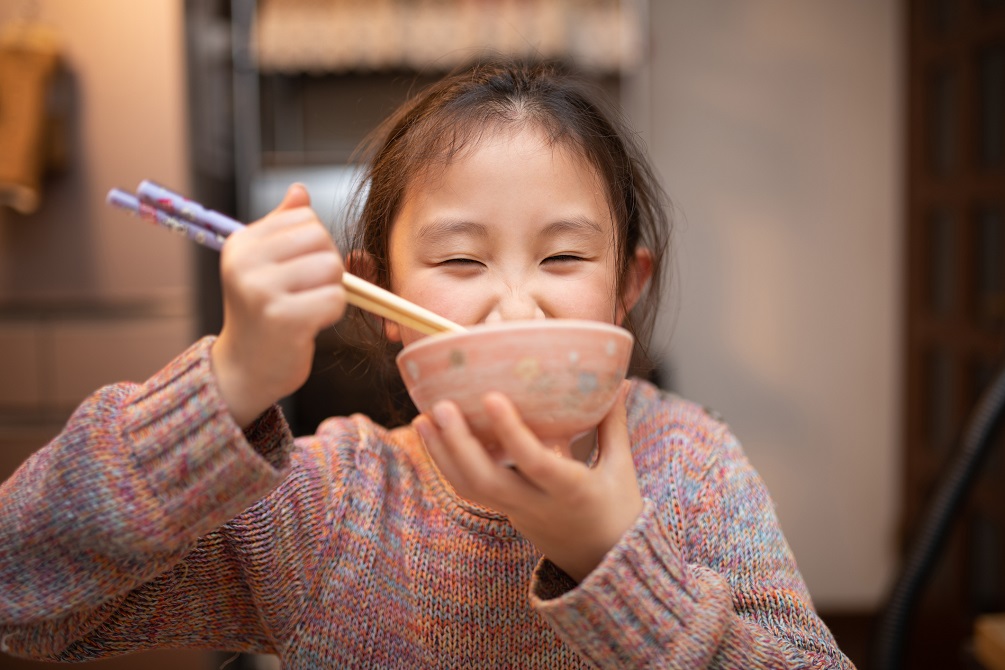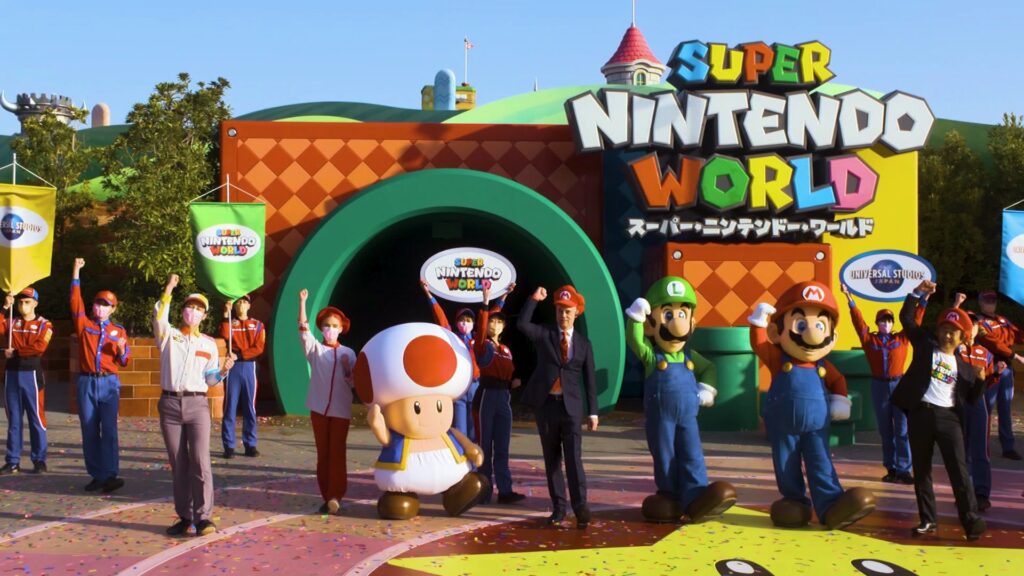Japan
Travel to Japan, an incredibly exotic destination where age-old traditions blend seamlessly with modern life through its culture, food, and lifestyle.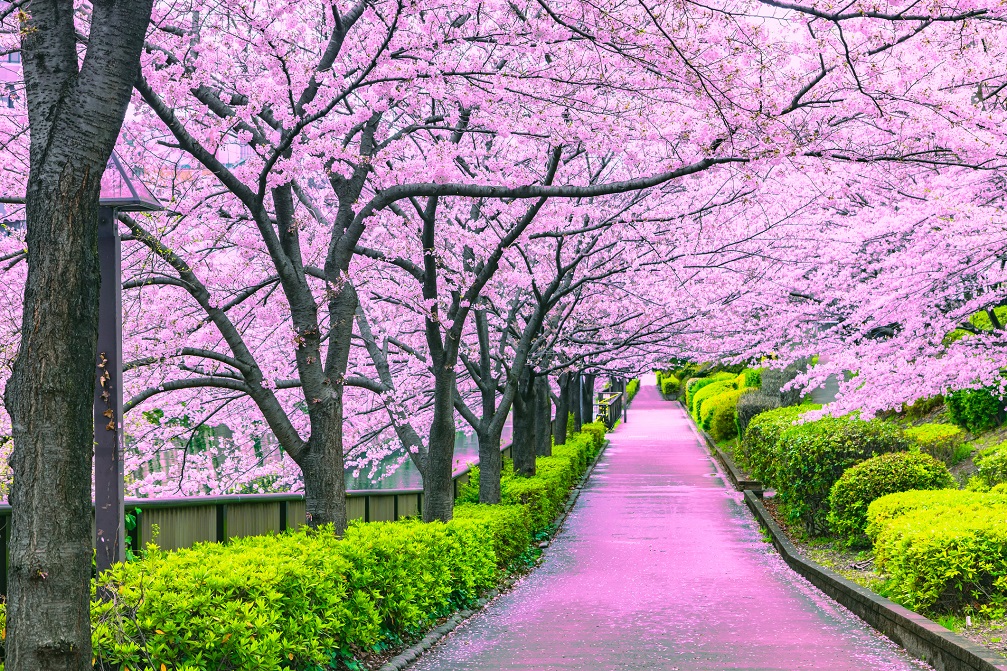
An enticing location, Japan beckons with its promise of delicious food, captivating landscapes and fascinating sights. While it may appear fairly modern, you can get a more intimate feel of its culture and traditions, when you travel through its environs.
Tokyo, Japan’s capital is a favourite among international travellers. Full of quirks, it is unpredictable, contradictory and magical. Visit Ueno Park, known for its beautiful cherry blossoms in Spring. The fashion-conscious will enjoy tripping through Harajuku and Omotesando.
Stop by spiritual locations like the Meij Shrine and Sendo-ji temple and get to the top of the Tokyo Tower for mesmerising sunset views. For those wanting to check off all the touristy spots on their list, there’s Mount Fuji, Tokyo Disneyland and DisneySea.
Once you’re done with Tokyo, take a trip to Takayama, and spend some time steeped in culture and tradition. For an immersive cultural experience, make your way through the UNESCO world heritage village sites of Gokoyama and Shirakawago, where you can stop by a traditional Samurai house.
Your next stop should be Kyoto, which was once the capital of Japan. A bustling city of many charms, it has everything you would hope to find in Japan. Take to the backstreets for a dose of culture, traditions and history. Stroll through GIon, one of the most well-known Geisha districts and a hub for green tea aficionados. Don’t miss a visit to the popular Fushimi Inari Taira, a shrine with red torii gates that flank a stretch of four kilometres to the divine Mount Inari.
If you’re looking to escape to the city, visit Osaka, which is just a 30-minute ride away by express train. The main locations to explore here are Shinsekai and Dotonbori. Shinsekai feels like you’ve stepped back a few centuries, while street food lovers will enjoy Dotonbori, one of the key tourist locations in Osaka.
A motley mix of old and new, Japan has surprises lurking around every corner.
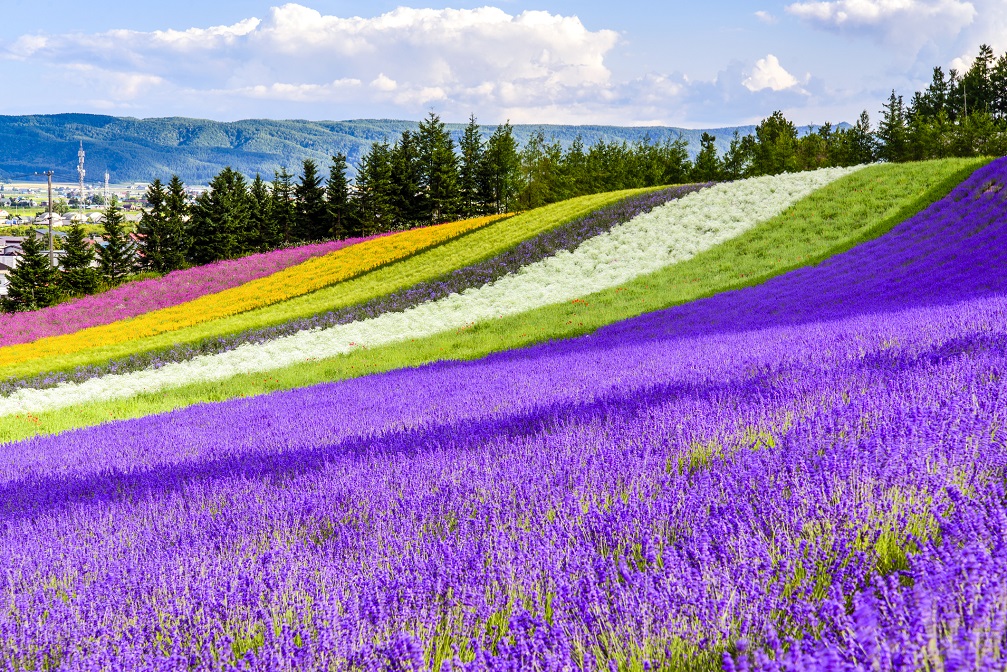


Japan is an island country which is located just off Asia’s east coast. It comprises an arc-type string of islands that take up approximately 2400 kilometres of area. The land area primarily consists of four islands: Hokkaido, Honshu, Shikoku and Kyushu. There are several tinier islands, like the Ryukyu islands which include the Okinawa island. Other noteworthy islands are the Azu, the central Honshu islands, and the Izu, Bonin, and Volcano Kazan islands.
Most of Japan’s land area is rough terrain, with much of the land surface comprising of the mountain area. There are quite a few active and dormant volcanoes including Mount Fiji, which is Japan’s tallest mountain at 3776 meters.
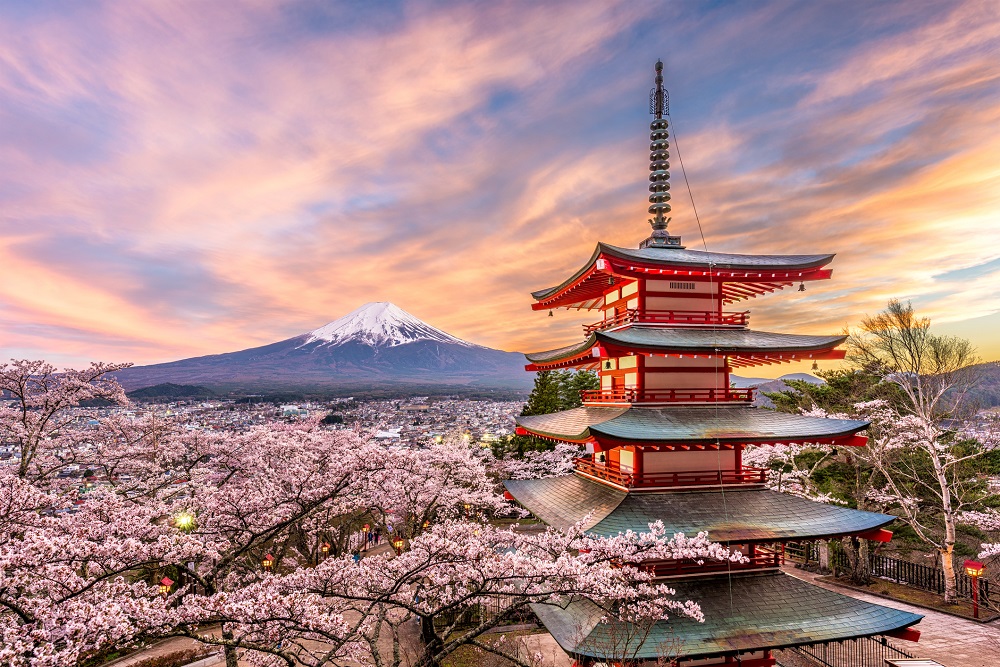


japan’s climate is a source of pride to the Japanese and consists of four seasons: Spring, Summer, Autumn, and Winter.
Spring runs from March to May and is one of the most pleasant times of the year to visit. The landscape is at its vibrant best, as the cherry blossoms bloom and festivities abound.
Summer is from June to August when the country experiences heavy rainfall and temperatures that run up to 35C. It is considerably humid during this time. If you intend to travel to Japan during this period, it is advisable to visit Northern areas like Hokkaido, or the Tohuku and Chubu mountains.
Autumn which is from September to November is also a great time to visit. The days are light and the landscape assumes mystic hues, which are as captivating as the cherry blossoms in Spring. However, sometimes the country is hit by typhoons during this period.
December to February comprises the Winter season, which has a charm of its own. The snowy white landscape is stunning and it’s an idyllic time for skiing or experiencing the hot springs. Winter temperatures range from -4C to 21C. Okinawa is a good location to visit as it is not as chilly as the rest of Japan during this time.
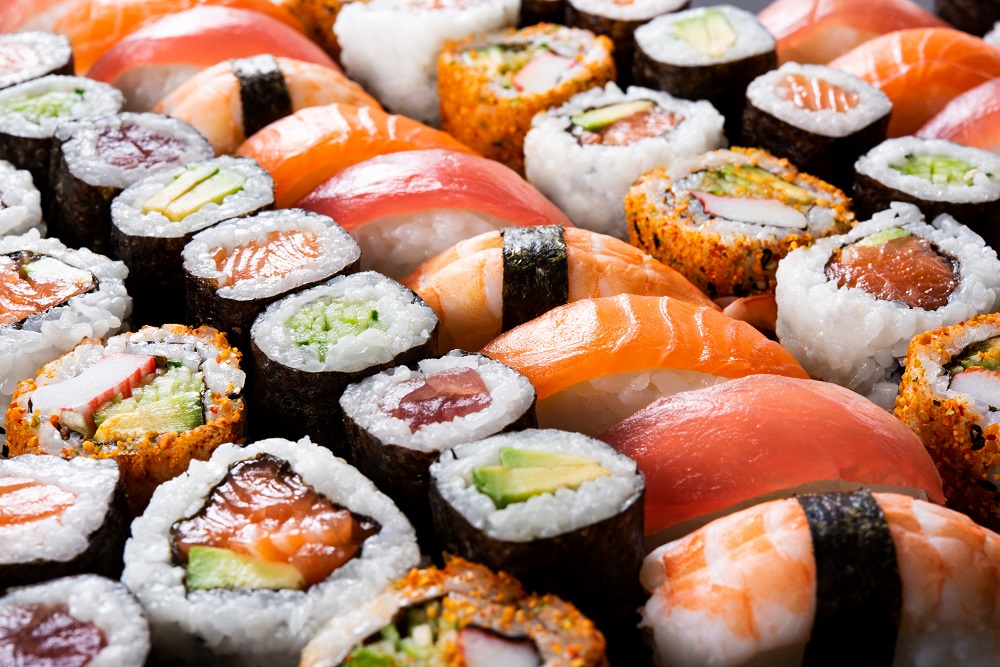


When you travel to Japan, you’ll notice that Japanese cuisine is as unique and quirky as its cities and villages. The food is a mix of tradition and innovation and features the best of seasonal produce, fine ingredients, and flawless presentation.
Incidentally, Tokyo has the highest number of Michelin-starred restaurants in the world.
The Japanese have a firm belief in the five primary tastes that pacify the palate- sour, sweet, bitter, salty, and savory, or umami. You will discover umami, which is considered a flavor by itself, in broths served across Tokyo.
Japanese cuisine consists primarily of noodles or rice, with soup. This is accompanied by okazu which is created from meat, vegetables, or fish. A dash of dashi, soy or miso rounds off the meal.
Sushi, which is raw fish served on vinegar seasoned rice, comes loaded with flavors and textures. For a late-night meal, Ramen, a dish of egg noodles in a salty soup is a favorite. Unami which is grilled river eel is the ideal antidote to the heat of Japan’s sultry summer.
Craving some fried food? Sink your teeth into some light and fluffy Tempura.
Other dishes worth sampling are the Sashimi, thin slices of fresh raw fish; Shabu-shabu, a dish put together at the table with a mix of vegetables, simmering in broth; Yakitori, skewers of chicken and Teppanyaki, a method by which seafood, vegetables or steak are cooked in an iron griddle.
To complete your meal, there are a number of authentic Japanese desserts to choose from like the Mochi, a creation of sticky mochi rice, molded into mochi balls which are relished with a sweet sauce or a topping called kinako. Other traditional desserts like the Daifuku, Teriyaki, and Dango will also satiate your sweet tooth.
You mustn’t leave Japan without drinking green tea, also called matcha, used in Japanese tea ceremonies.
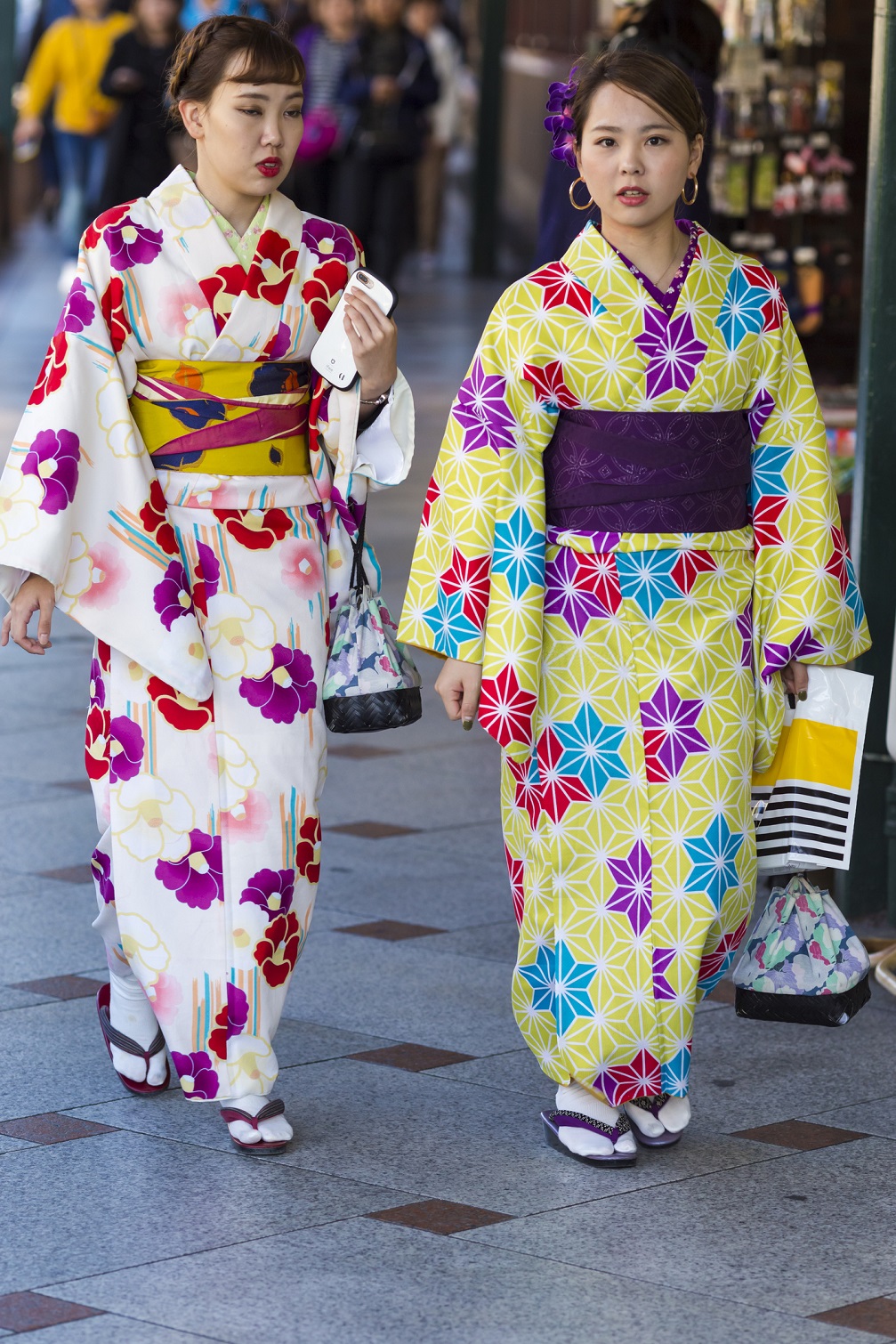


Wondering what to pack when you travel to Japan? The Japanese dress somewhat conservatively but the younger generation is quite bold and you’ll come across some whacky outfits in Tokyo.
Neatness in clothing is favored and tackiness is frowned upon. Dressing in layers is advisable because it is warmer indoors and cooler outdoors.
Shorts and jeans are acceptable clothing for women in Japan. Tattoos are taboo in Japan and if you have an exposed tattoo, you may be restricted from entering certain places. So, it is recommended you keep them covered as far as possible. Also, Japanese women don’t wear nail polish.
Wear comfortable shoes when you go sightseeing. Japanese women love to don high heels. So, carry one for evening outings. While traveling in winter, do carry an overcoat, muffler, and scarves.
The kimono is Japan’s national dress and there are various kinds of kimonos that are worn, depending on the occasion.
For men, trousers, shirts, jeans, and T-shirts are acceptable. A black-tie has a funeral context, and therefore it is best to avoid wearing one. Stubbles are considered unacceptable and a clean-shaven face is preferred.
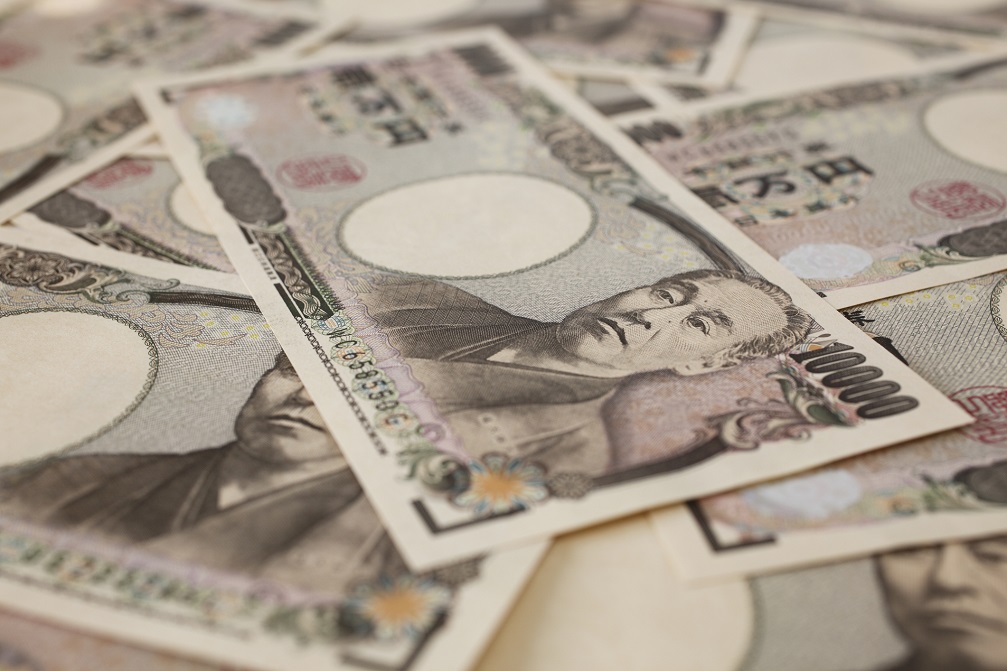


The currency of Japan is the Japanese Yen. Currently, one Pound Sterling equals 154.87 Japanese Yen.
Most international credit cards and ATM cards are accepted in Japan. You can exchange your currency at the airport because it is good to have some Japanese Yen before you leave the airport.
The airport is in fact, the best place to exchange your currency. Some big banks and post offices have exchange facilities, but this process can take up a few hours.
Many smaller stores and restaurants do not accept credit cards. So, it is best to keep some cash handy.
You can use international ATM cards at Seven Bank ATMs and Japan Post ATMs. The ATMs in Japan have fees depending on the day and time of the week, with fees ranging from 0 yen to 216 yen. It is best to avoid travellers checks altogether.
Most departmental and convenience stores accept credit cards and you can use them for larger purchases.
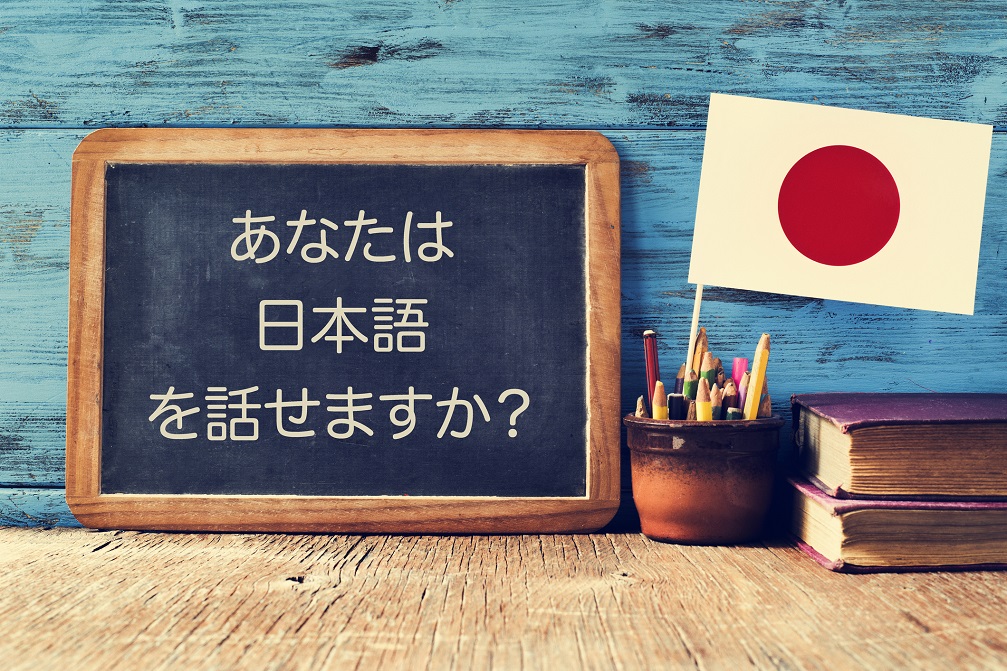


While Japanese is obviously the language spoken in Japan, English is commonly spoken in major cities like Tokyo, Osaka, and Kyoto.
Most signages bear Japanese characters. It is quite useful to learn a few Japanese phrases and words before you visit like Kon’nichiwa-hello; Arigato- thanks; Kanpai-cheers; how much; Ikura and delicious: Oishi.
Politeness in speech and formality assume paramount significance in the Japanese language. In daily life, certain factors like age, experience, and job define the variations in a social positioning. The person in the lower position uses the more polite form of speech while the one in the higher position uses the plain form.
Essentially, there are three levels of spoken language: teineigo (polite language), sonkeigo (respectful language), and kenjogo (humble language).
Japanese culture has many nuances and is mainly influenced by its religions. While the local Shinto religion is widely followed, Buddhism and Confucianism have also influenced the culture and customs of Japan.
Hard work and social accord are held in high esteem. While Western culture has made inroads in Japan, the Japanese take great pride in their traditional rituals and practices like their tea ceremonies, dressing in a kimono, and learning traditional arts and crafts from a young age.
There are many interesting customs that the Japanese still follow like removing shoes before entering the house, bowing 45 degrees as a sign of respect, bathing in the evening instead of the morning, and avoiding physical displays of affection like hugging and kissing when meeting loved ones.
There are three main festivals in Japan. New Year’s day, the Cherry Blossom festivities in April, and the Obon holiday
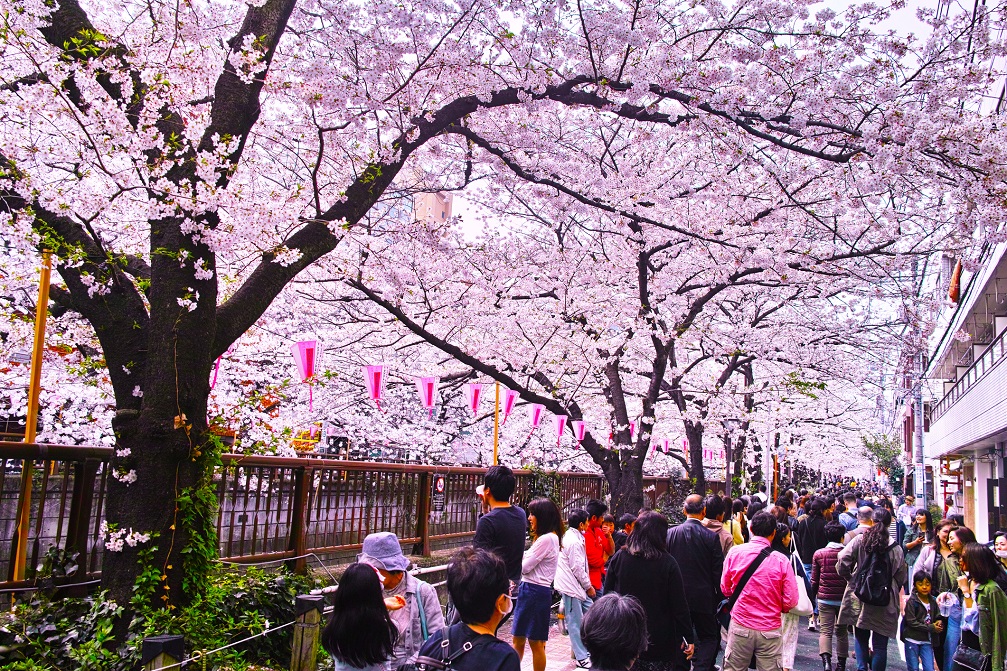


in August when the Japanese return to their hometowns to commemorate the spirits of the deceased.
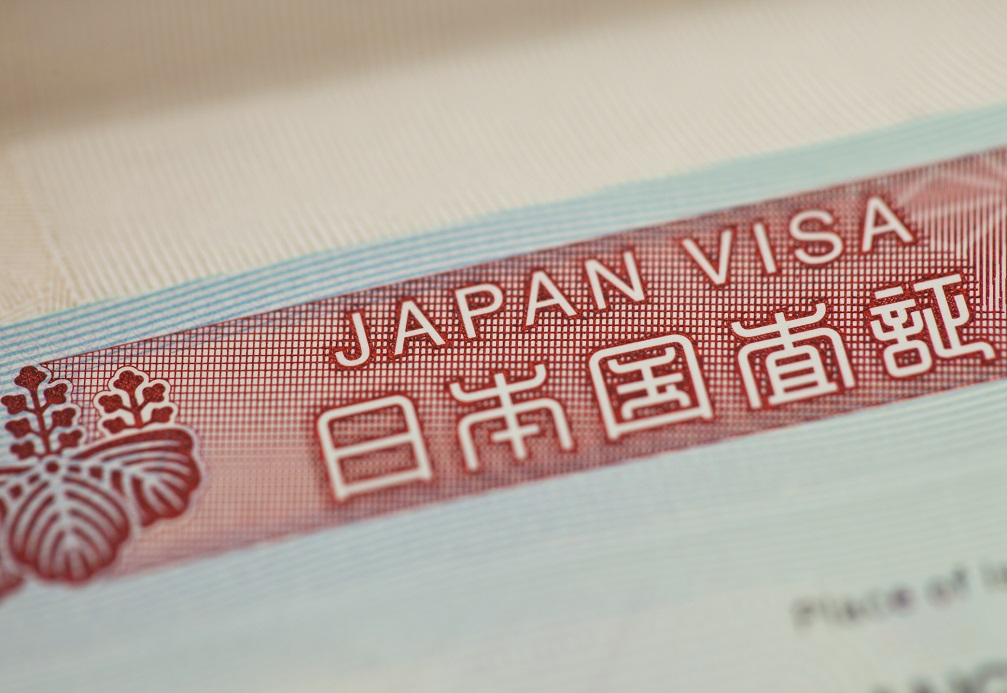


UK travelers who have a British Citizen or British National (Overseas) passport do not need a tourist visa to travel to Japan for a stay of up to 90 days.
However, you may need to show proof of a return or onward ticket.
If you have a criminal record or have been arrested, even without a conviction, it is best to check with the Japanese embassy if you are eligible to travel to Japan with your passport. Visas on arrival aren’t available in Japan.
If you have a connecting flight via another country, then you may need a transit visa. In that case, it is best to to check the visa requirements of that particular country.
Japan is certainly one of the most polite, exotic, and friendly countries in the world. It is a modern world that blends smoothly with the traditions and culture of its rich heritage.
Keywords used: Travel to Japan – 4 times.
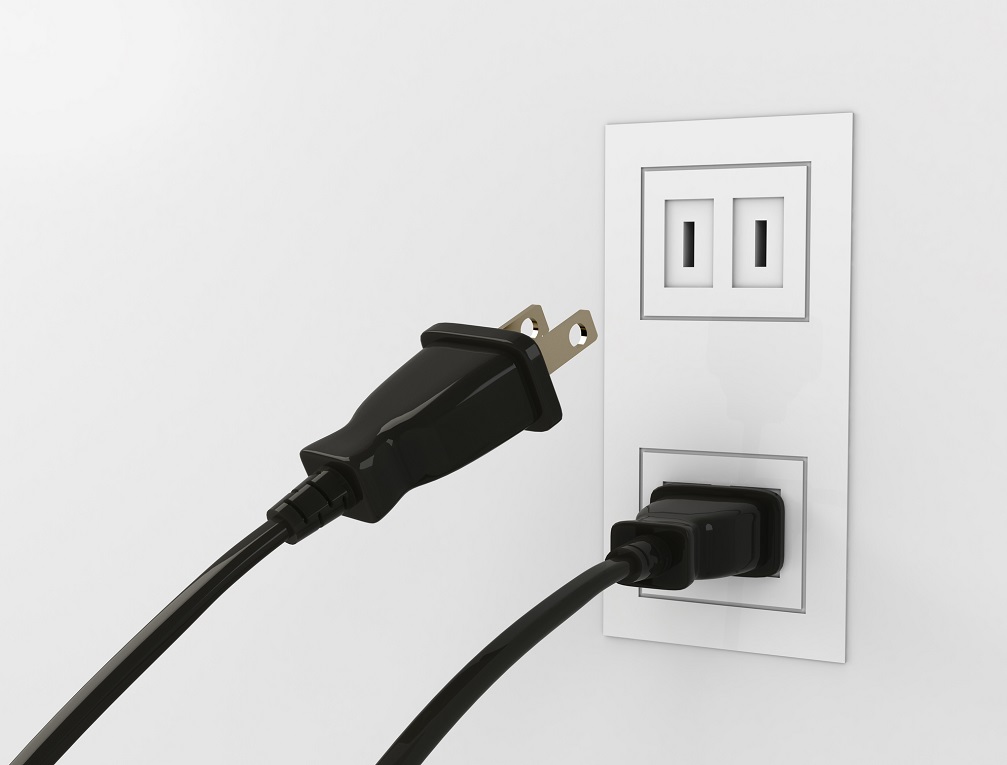


The standard voltage in Japan is 100 V, while the frequency is 50/60 Hz. The standard voltage in the UK is 200-240 V. So, you will need a converter when you travel to Japan. It is best to get a combination of a power plug adapter and voltage converter.
The frequency may also vary from region to region. While Eastern Japan uses 50Hz, Western Japan uses 60Hz. Smaller electrical equipment can handle both these frequencies, but it is advisable to check the fine print on the appliance.
In case your label says ‘INPUT: 100-240V, 50/60 Hz’, then your equipment can be used across all countries. Usually, this applies to tablet and laptop chargers, mobile phones, and cameras.



An enticing location, Japan beckons with its promise of delicious food, captivating landscapes and fascinating sights. While it may appear fairly modern, you can get a more intimate feel of its culture and traditions, when you travel through its environs.
Tokyo, Japan’s capital is a favourite among international travellers. Full of quirks, it is unpredictable, contradictory and magical. Visit Ueno Park, known for its beautiful cherry blossoms in Spring. The fashion-conscious will enjoy tripping through Harajuku and Omotesando.
Stop by spiritual locations like the Meij Shrine and Sendo-ji temple and get to the top of the Tokyo Tower for mesmerising sunset views. For those wanting to check off all the touristy spots on their list, there’s Mount Fuji, Tokyo Disneyland and DisneySea.
Once you’re done with Tokyo, take a trip to Takayama, and spend some time steeped in culture and tradition. For an immersive cultural experience, make your way through the UNESCO world heritage village sites of Gokoyama and Shirakawago, where you can stop by a traditional Samurai house.
Your next stop should be Kyoto, which was once the capital of Japan. A bustling city of many charms, it has everything you would hope to find in Japan. Take to the backstreets for a dose of culture, traditions and history. Stroll through GIon, one of the most well-known Geisha districts and a hub for green tea aficionados. Don’t miss a visit to the popular Fushimi Inari Taira, a shrine with red torii gates that flank a stretch of four kilometres to the divine Mount Inari.
If you’re looking to escape to the city, visit Osaka, which is just a 30-minute ride away by express train. The main locations to explore here are Shinsekai and Dotonbori. Shinsekai feels like you’ve stepped back a few centuries, while street food lovers will enjoy Dotonbori, one of the key tourist locations in Osaka.
A motley mix of old and new, Japan has surprises lurking around every corner.



Japan is an island country which is located just off Asia’s east coast. It comprises an arc-type string of islands that take up approximately 2400 kilometres of area. The land area primarily consists of four islands: Hokkaido, Honshu, Shikoku and Kyushu. There are several tinier islands, like the Ryukyu islands which include the Okinawa island. Other noteworthy islands are the Azu, the central Honshu islands, and the Izu, Bonin, and Volcano Kazan islands.
Most of Japan’s land area is rough terrain, with much of the land surface comprising of the mountain area. There are quite a few active and dormant volcanoes including Mount Fiji, which is Japan’s tallest mountain at 3776 meters.



japan’s climate is a source of pride to the Japanese and consists of four seasons: Spring, Summer, Autumn, and Winter.
Spring runs from March to May and is one of the most pleasant times of the year to visit. The landscape is at its vibrant best, as the cherry blossoms bloom and festivities abound.
Summer is from June to August when the country experiences heavy rainfall and temperatures that run up to 35C. It is considerably humid during this time. If you intend to travel to Japan during this period, it is advisable to visit Northern areas like Hokkaido, or the Tohuku and Chubu mountains.
Autumn which is from September to November is also a great time to visit. The days are light and the landscape assumes mystic hues, which are as captivating as the cherry blossoms in Spring. However, sometimes the country is hit by typhoons during this period.
December to February comprises the Winter season, which has a charm of its own. The snowy white landscape is stunning and it’s an idyllic time for skiing or experiencing the hot springs. Winter temperatures range from -4C to 21C. Okinawa is a good location to visit as it is not as chilly as the rest of Japan during this time.



When you travel to Japan, you’ll notice that Japanese cuisine is as unique and quirky as its cities and villages. The food is a mix of tradition and innovation and features the best of seasonal produce, fine ingredients, and flawless presentation.
Incidentally, Tokyo has the highest number of Michelin-starred restaurants in the world.
The Japanese have a firm belief in the five primary tastes that pacify the palate- sour, sweet, bitter, salty, and savory, or umami. You will discover umami, which is considered a flavor by itself, in broths served across Tokyo.
Japanese cuisine consists primarily of noodles or rice, with soup. This is accompanied by okazu which is created from meat, vegetables, or fish. A dash of dashi, soy or miso rounds off the meal.
Sushi, which is raw fish served on vinegar seasoned rice, comes loaded with flavors and textures. For a late-night meal, Ramen, a dish of egg noodles in a salty soup is a favorite. Unami which is grilled river eel is the ideal antidote to the heat of Japan’s sultry summer.
Craving some fried food? Sink your teeth into some light and fluffy Tempura.
Other dishes worth sampling are the Sashimi, thin slices of fresh raw fish; Shabu-shabu, a dish put together at the table with a mix of vegetables, simmering in broth; Yakitori, skewers of chicken and Teppanyaki, a method by which seafood, vegetables or steak are cooked in an iron griddle.
To complete your meal, there are a number of authentic Japanese desserts to choose from like the Mochi, a creation of sticky mochi rice, molded into mochi balls which are relished with a sweet sauce or a topping called kinako. Other traditional desserts like the Daifuku, Teriyaki, and Dango will also satiate your sweet tooth.
You mustn’t leave Japan without drinking green tea, also called matcha, used in Japanese tea ceremonies.



Wondering what to pack when you travel to Japan? The Japanese dress somewhat conservatively but the younger generation is quite bold and you’ll come across some whacky outfits in Tokyo.
Neatness in clothing is favored and tackiness is frowned upon. Dressing in layers is advisable because it is warmer indoors and cooler outdoors.
Shorts and jeans are acceptable clothing for women in Japan. Tattoos are taboo in Japan and if you have an exposed tattoo, you may be restricted from entering certain places. So, it is recommended you keep them covered as far as possible. Also, Japanese women don’t wear nail polish.
Wear comfortable shoes when you go sightseeing. Japanese women love to don high heels. So, carry one for evening outings. While traveling in winter, do carry an overcoat, muffler, and scarves.
The kimono is Japan’s national dress and there are various kinds of kimonos that are worn, depending on the occasion.
For men, trousers, shirts, jeans, and T-shirts are acceptable. A black-tie has a funeral context, and therefore it is best to avoid wearing one. Stubbles are considered unacceptable and a clean-shaven face is preferred.



The currency of Japan is the Japanese Yen. Currently, one Pound Sterling equals 154.87 Japanese Yen.
Most international credit cards and ATM cards are accepted in Japan. You can exchange your currency at the airport because it is good to have some Japanese Yen before you leave the airport.
The airport is in fact, the best place to exchange your currency. Some big banks and post offices have exchange facilities, but this process can take up a few hours.
Many smaller stores and restaurants do not accept credit cards. So, it is best to keep some cash handy.
You can use international ATM cards at Seven Bank ATMs and Japan Post ATMs. The ATMs in Japan have fees depending on the day and time of the week, with fees ranging from 0 yen to 216 yen. It is best to avoid travellers checks altogether.
Most departmental and convenience stores accept credit cards and you can use them for larger purchases.



While Japanese is obviously the language spoken in Japan, English is commonly spoken in major cities like Tokyo, Osaka, and Kyoto.
Most signages bear Japanese characters. It is quite useful to learn a few Japanese phrases and words before you visit like Kon’nichiwa-hello; Arigato- thanks; Kanpai-cheers; how much; Ikura and delicious: Oishi.
Politeness in speech and formality assume paramount significance in the Japanese language. In daily life, certain factors like age, experience, and job define the variations in a social positioning. The person in the lower position uses the more polite form of speech while the one in the higher position uses the plain form.
Essentially, there are three levels of spoken language: teineigo (polite language), sonkeigo (respectful language), and kenjogo (humble language).
Japanese culture has many nuances and is mainly influenced by its religions. While the local Shinto religion is widely followed, Buddhism and Confucianism have also influenced the culture and customs of Japan.
Hard work and social accord are held in high esteem. While Western culture has made inroads in Japan, the Japanese take great pride in their traditional rituals and practices like their tea ceremonies, dressing in a kimono, and learning traditional arts and crafts from a young age.
There are many interesting customs that the Japanese still follow like removing shoes before entering the house, bowing 45 degrees as a sign of respect, bathing in the evening instead of the morning, and avoiding physical displays of affection like hugging and kissing when meeting loved ones.
There are three main festivals in Japan. New Year’s day, the Cherry Blossom festivities in April, and the Obon holiday



in August when the Japanese return to their hometowns to commemorate the spirits of the deceased.



UK travelers who have a British Citizen or British National (Overseas) passport do not need a tourist visa to travel to Japan for a stay of up to 90 days.
However, you may need to show proof of a return or onward ticket.
If you have a criminal record or have been arrested, even without a conviction, it is best to check with the Japanese embassy if you are eligible to travel to Japan with your passport. Visas on arrival aren’t available in Japan.
If you have a connecting flight via another country, then you may need a transit visa. In that case, it is best to to check the visa requirements of that particular country.
Japan is certainly one of the most polite, exotic, and friendly countries in the world. It is a modern world that blends smoothly with the traditions and culture of its rich heritage.
Keywords used: Travel to Japan – 4 times.



The standard voltage in Japan is 100 V, while the frequency is 50/60 Hz. The standard voltage in the UK is 200-240 V. So, you will need a converter when you travel to Japan. It is best to get a combination of a power plug adapter and voltage converter.
The frequency may also vary from region to region. While Eastern Japan uses 50Hz, Western Japan uses 60Hz. Smaller electrical equipment can handle both these frequencies, but it is advisable to check the fine print on the appliance.
In case your label says ‘INPUT: 100-240V, 50/60 Hz’, then your equipment can be used across all countries. Usually, this applies to tablet and laptop chargers, mobile phones, and cameras.
Travel related news, information and inspirational articles and videos for travellers booking flights or holidays to Japan. Ask questions about travel in Japan and get answers from Japan experts
NEWS
Inspiration, Information and Travel Guides
MEET THE Japan EXPERTS
If you are looking to book a holiday to Japan or needs some help and advice planning travel to Japan then contact one of the UK based independent travel agents that specialise in Japan itineraries.
FEATURED VIDEOS
Your Travel Questions Answered
Ask any travel related question and get an answer from one of our experts that will provide you with an answer from their personal experience
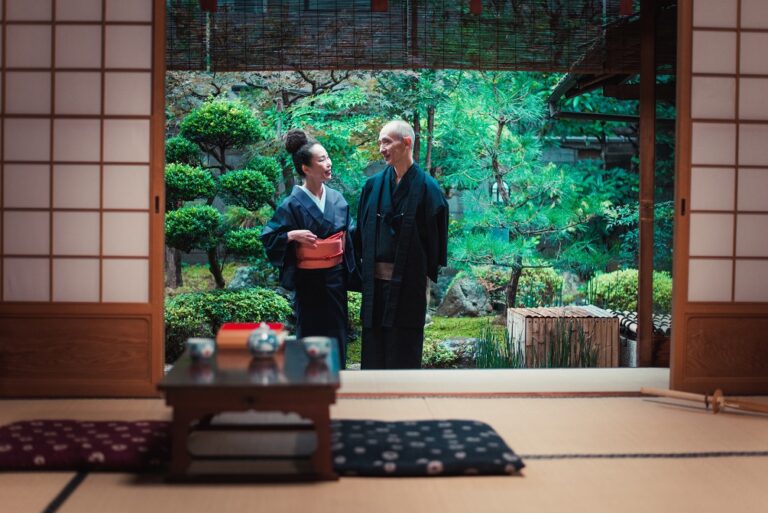

My sister has recommended that, before I visit her in Japan next year, I should research the various social conventions in Japanese culture since there are many! Does anyone know what these unspoken rules entail? How can I avoid being labeled as a rude foreigner?
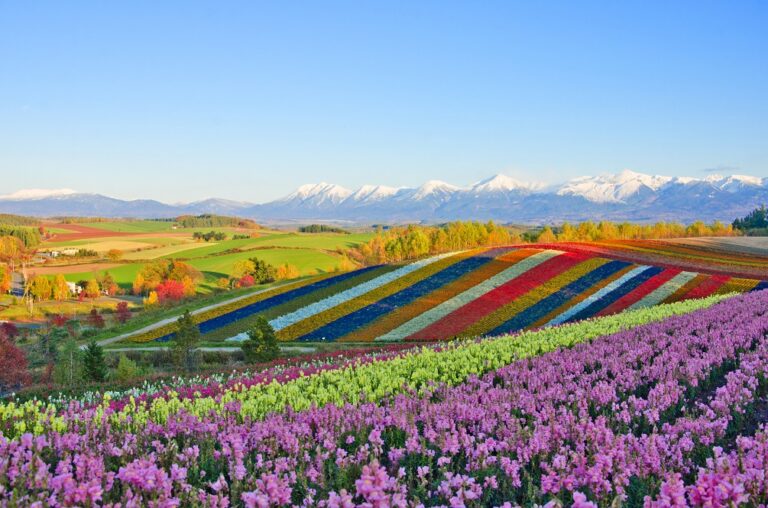

Hokkaido remains a sweet spot for travelers, however, I have heard that the climate there could be harsh at times, not to mention the occasional cyclones that occur there. Keeping that in mind, I just wanted to know whether Hokkaido is a summer-place or a winter-place? Which season should I go in to make the most of my trip?
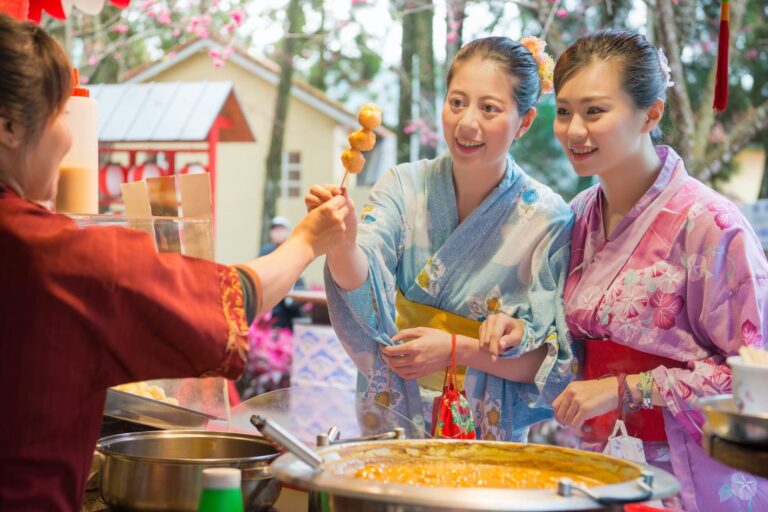

My family is planning a trip to Japan and I would like to join them as we have found cheap flights to Japan. However, I am vegetarian and I don’t want anyone’s travel plans to change because of me. I would like to know if Japan is vegetarian-friendly? Can a vegetarian survive in Japan? Is it hard to eat vegetarian in Japan? Also, can I find vegetarian restaurants in Tokyo?
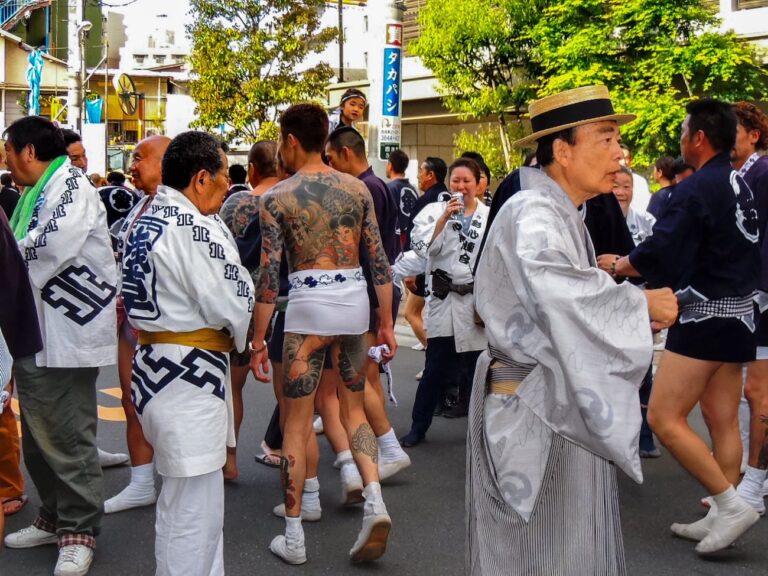

I have heard that in Japan tattoos are almost taboo. Is it still the case? I am planning a trip to Japan and I have visible tattoos on my arms and legs. Is it okay to travel to Japan if I have tattoos? What should I prepare for?
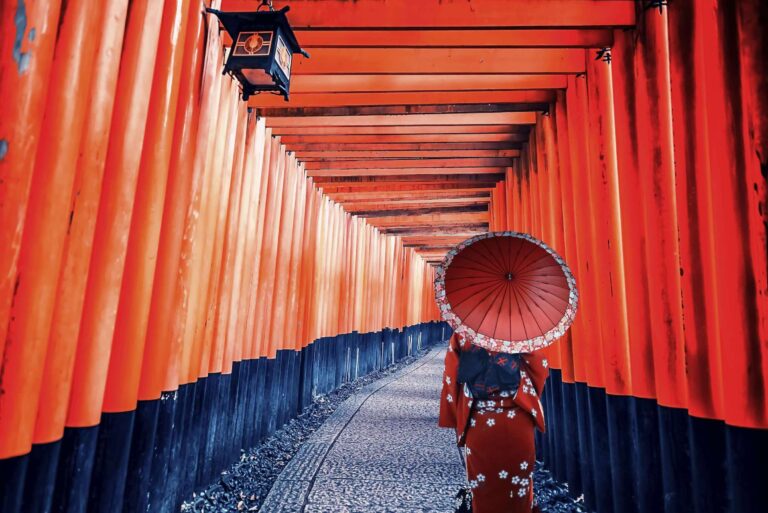

What are your thoughts – can I go to Japan only speaking English? How can I go to Japan if I don’t speak Japanese? During the past few months, I have been doing lots of research to plan a trip to Japan. However, it has come to my attention that people often mention the language barrier issue in Japan.





